So you’re thinking about climbing Mt Everest? For more than a century, the prospect of standing on the top of the world’s highest mountain has attracted mountaineers from all walks of life.
Everest is linked with incredible stories of adventure, excitement and drama. Just remember that high-altitude climbing comes with risks and uncertainties. It’s not for everyone.
If you do make it past all the challenges to Mt Everest's summit, standing on top of the world could be the most rewarding experience of your life.
Here's what you need to know before you go.
Climbing Everest – Key Questions
What’s It Like To Climb Mount Everest?
Everest expectations are often very different to reality. You need to let go of any idealistic notions of re-living the pioneering climbs. The route to Everest’s summit is not only well-trodden but also frequently trodden.
On a good weather day, there is a stream of people making a bid for the summit. Traditionalists will turn their noses up at the prospect of queuing to get to the top of a mountain.
Modern equipment, better weather forecasting and an ever-increasing number of experienced agencies have expanded the target market for expeditions. Summit expeditions are fully catered with extra Sherpas and extra oxygen (so long as you are willing to pay). These days, expedition companies go as far as providing wifi for their climbers at base camp.
In the past, there were mostly American and European teams on the mountain. Over recent years, there has been a huge increase in Chinese and Indian expeditions to the summit.
Even with these extra luxuries, there’s no such thing as an easy Mount Everest climb. No one can deny that climbers face extreme physical obstacles and need to push beyond mental boundaries. There’s no taming Everest. A rising death toll, earthquakes and avalanches keep even the toughest mountaineers humble.
Those that make it to the summit experience an unparalleled sense of achievement. Not to mention, a pretty good view from the top of the Himalayas, the highest standing point in the world!
When Is The Best Time To Climb Mount Everest?
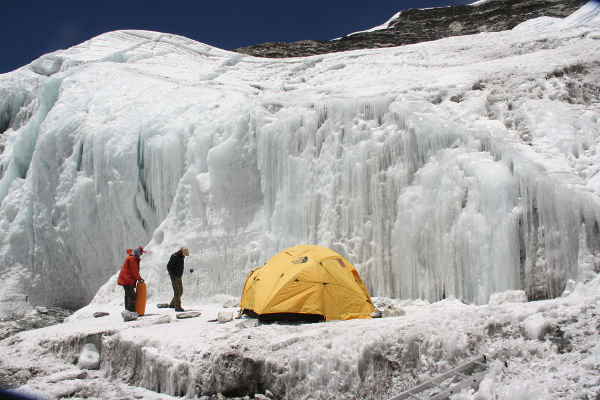
The best time to climb Mt. Everest is in the Autumn/ Fall season, which is in April and May just before the Monsoon rains begin. Once the Monsoon season is over, some climbers attempt the climb in the fall (October). In the fall, strong winds make for a challenging summit.
You might hear talk of a ‘summit-window’. This usually occurs late in the season during the last two weeks of May. At this time temperatures are slightly warmer and the jet stream which brings high-altitude winds moves north. Even during this time, there are very few days when wind speeds are below 10 knots.
Everest was first ascended in Winter in 1960 by a Polish team. Only 15 people have ever summited Everest in meteorological winter. Although proven possible, it’s not really worth risking the extreme cold. Not just that, oxygen levels at high altitudes are lower in winter which makes acclimatization all the more difficult.
Many climbers rely on EverestWeather.com for high altitude forecasts prior to and during their trek.
You may also like: Mount Everest facts
How Long Does It Take To Climb Mount Everest?
It generally takes two months to complete a Mount Everest expedition. Most climbing parties aim to get to Nepal late in March and will only be back at season’s end (end of May).
Summit parties will spend the first two weeks trekking to Everest Base Camp. If you can afford an expensive helicopter ride, you can skip this part, but will need to pre-acclimatise somewhere before.
From EBC, its more than a month of acclimatizing while potentially doing some practice climbs on Island Peak or Lobuche, and making a trip through the Khumbu ice fall to higher camps.
Extra days need to be factored in to wait for good climbing conditions for the summit attempt. It’s important to wait for the best possible weather to summit.
How Much Does It Cost To Climb Mount Everest?
Climbing Everest is not for the broke backpacker. Permits alone cost around $11,000 per person.
You should expect to pay between US$35,000 and $100,000 to be part of a climbing expedition. With a good Nepal tour company you’re looking at about $45,000 - $50,000. This increases to about $70,000 with an international agency.
Additionally, you will need to have thousands of dollars’ worth of personal equipment (,ore on this below).
Read our full article on the cost to climb Mount Everest.
What Equipment Do You Need For Climbing Mount Everest?
To climb Mount Everest, you are going to need a lot of proper, high altitude gear. Expedition companies will provide things like tents and oxygen but you have to supply all personal clothing and equipment. Some climbing gear can be rented, make sure you discuss these options with your agency well in advance.
Boots, down suits, sleeping bags and gloves alone will be around $5000. Always buy the best equipment you can find. Don’t spend $50,000 on an expedition, save a few dollars on cheaper boots and come home missing toes!
Below is a list of the essential gear for climbing Mt. Everest;
- Trekking shoes/boots - for the hike in and out
- High Altitude Boots - Specialist Alpine climbing boots will cost you $1000+
- Insulated Camp Boots
- Wool socks
- Trekking Jackets (hardshell, down, fleece)
- Trekking Pants (hardshell or softshell, lightweight)
- Down Suite, in which case you do not need separate down pants and down jacket
- Gloves (inner, hardshell, climbing mittens)
- Head wear (hats, balaclava, buff, beanie)
- Glacier glasses and Polarized Ski Goggles
- Headlamp
- 55- 70L Backpack
- 30L trekking pack (summit pack)
- Duffle bag for yak transport
- -40° Fahrenheit down sleeping bag
- Water bladder - insulated so it doesn’t freeze
- Thermos
You may be able to rent some of the following climbing equipment from your expedition company or a mountaineering shop in Nepal/ Tibet;
- Climbing Harness
- Helmet
- Accessory Cord
- Ice-Axe
- Crampons
- Carabiners
- Belay Device
- Ascender
- Trekking Poles
How Do You Choose A Company To Climb Mount Everest?
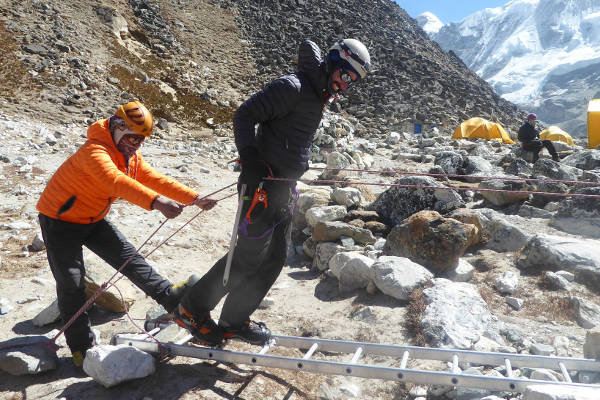
One of the first decisions that you need to make is to decide which company you want to go with. Everest expedition companies come in all shapes and sizes and the same can be said for their quotes.
Your choice comes down to how much of the expedition responsibility you are able and willing to shoulder (your experience). You also need to ask yourself what comfort level you expect.
Do you want a bigger, well-established company that may have a strong reputation, but be more expensive? Alternatively, a small boutique company provides a more tailored experience.
Perhaps budget is most important to you. In that case, there are several cut price companies that may fit your bill. For top dollar, you could hire a private guide and all the support possible.
When picking your company be sure to ask for references. Ask difficult questions, for example;
- How many bottles of oxygen will be available to me?
- Will I have a personal Sherpa climbing with me on summit day?
- Are Sherpa tips included?
- Will there be climbing benchmarks that I have to meet?
Get this decision right and you’ll have a much better experience on the mountain. If you get it wrong, you’ll probably be coming home early and frustrated.
Mount Everest Climbing Routes
There are only two main guided route options up Everest. The South Col Route and North East Ridge route. There are about 20 alternative routes up Mt Everest. These routes have too high a risk for expedition companies to consider, however most have been climbed a handful of times.
Below is a quick overview of the camps and routes on the Nepal and Tibetan sides.
Climbers do not ascend directly to the summit. There is long process of acclimatization where teams move up and down between the lower camps.
South Col Route, Nepal
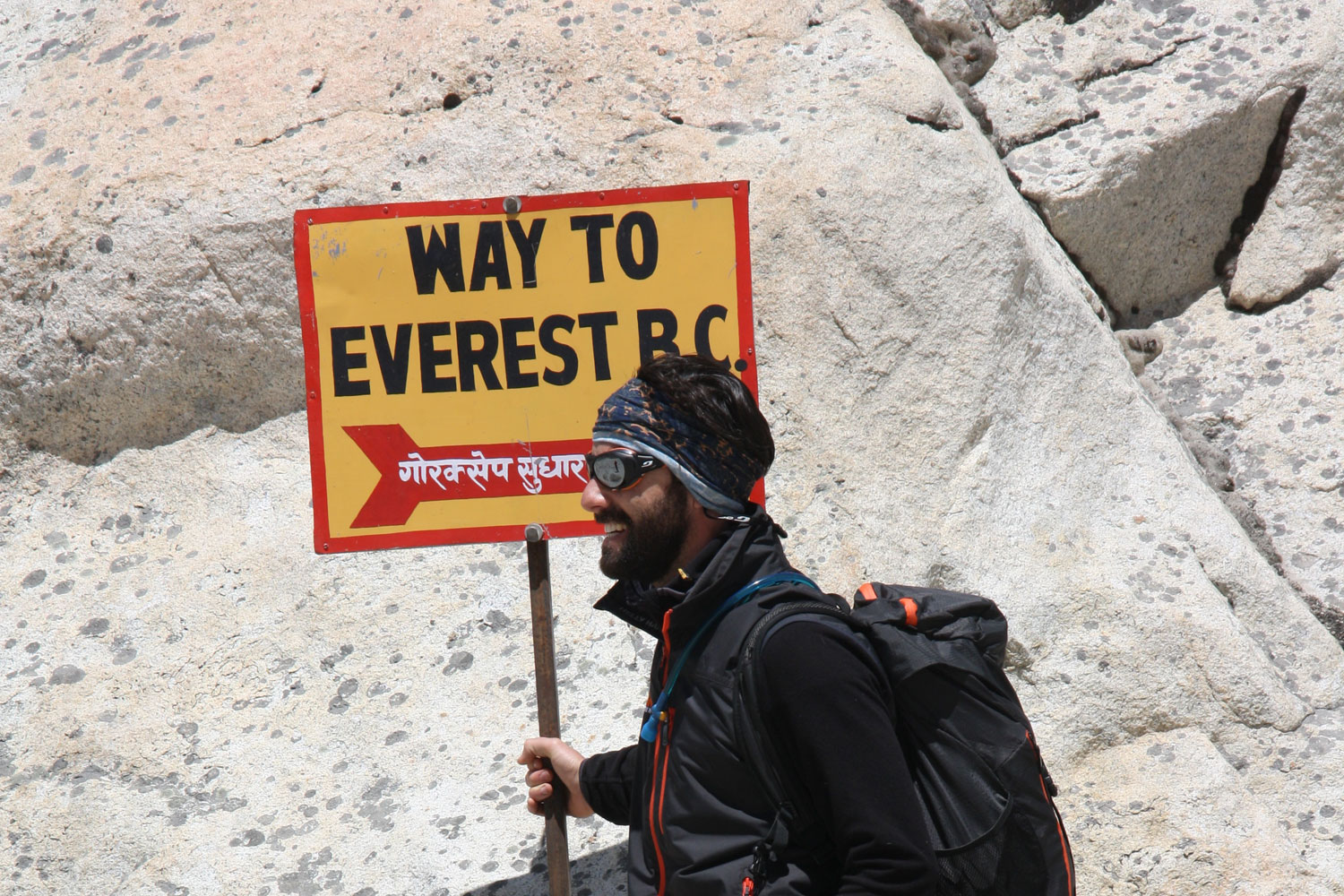
This was the original route as climbed by Edmund Hilary and Tenzing Norgay on that first successful expedition lead by John Hunt in 1953.
Base Camp (5,364m / 7,598ft) - Camp 1 (6,065m / 19,900)
Just above Base Camp of the South Col Route, lies the notorious Khumbu Icefall. Climbers need to navigate this constantly shifting sheet of ice. There are ladders and ropes installed across the ice but even this does not guarantee safety. Up until 2016 there were 44 recorded deaths on the icefall. The icefall is a frightening segment of the climb and most expedition companies try to limit the number of times you need to go through it.
This video gives you a good sense of what going through the icefall entails.
Camp 1 - Camp 2 (6,400m, 20,997ft)
Move up through the western Cwm, a famous broad, flat glacial valley which ends on the Lhotse face of Mount Everest. There are many crevasses to pass as well as high avalanche risk on this section. This valley gets very hot so it’s best to get started early in the day.
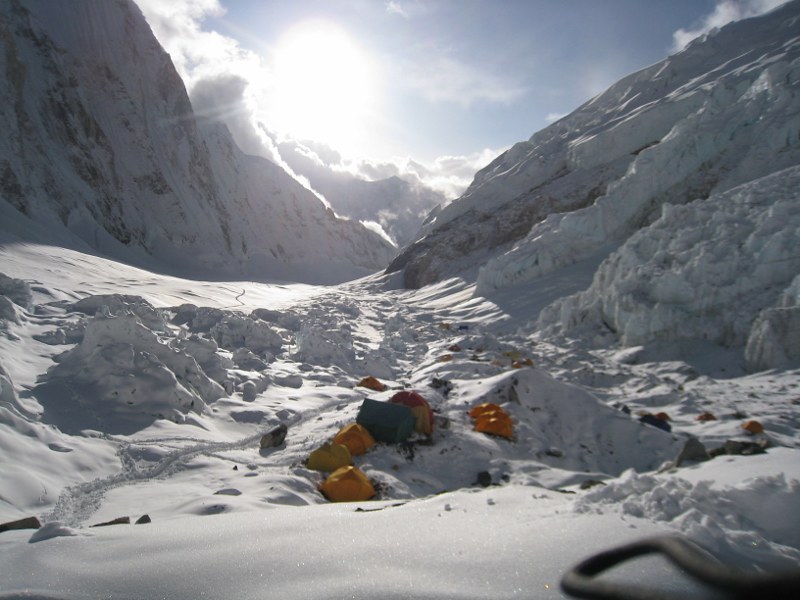
View down the Western Cwm from Camp 2. Image by Moving Mountains Trust
Camp 2 - Camp 3 (7,162m / 23,500ft)
This part of the climb is made more difficult as climbers start to feel the effects of high altitude. To reach Camp 3, you need to ascend the Lhotse face. In places, this ice face is as steep as 45 degrees. There is a fixed rope to help climbers ascend. This face is tough but offers some training for the final summit .
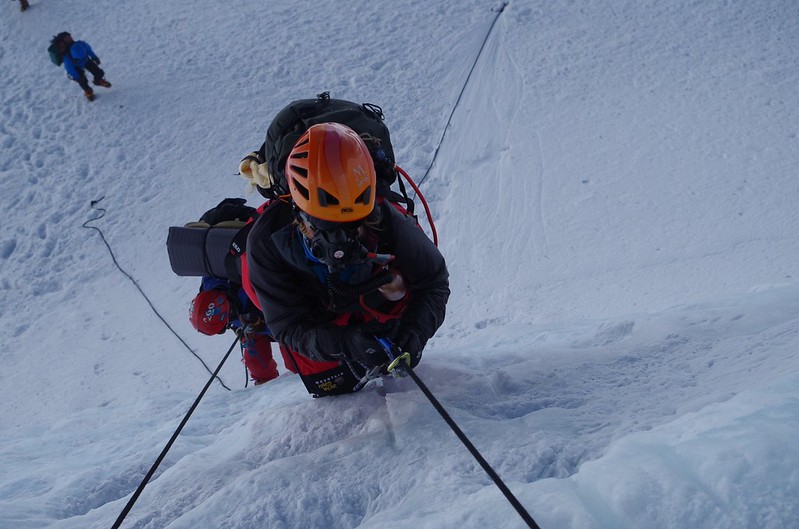
Start of the Lhotse Face ascent. Image by M&J Peaks
Camp 3 - South Col (8,016 m / 26,300ft)
From Camp 3, climbers cross what’s known as the Yellow Band, a section of limestone rock. At this point, you are likely to go on to supplemented oxygen to help deal with the altitude.
Next is the Geneva Spur, some of the most difficult climbing up to this point. It is easier to climb the steep final section of the spur when there is snow than on bare, loose rock.
Finally you reach the saddle. This is a flat and extremely windy area of loose rocks. From this point, teams make their bids for the summit.
South Col - Summit ( 8,849 / 29,032ft)
The last part of the climb can be a frustratingly slow process as there is often a high amount of climbers and a queue may form. You can expect to be stopping regularly to wait for those ahead. The triangular face is fixed with ropes and can be covered in snow depending on time of year.
Once you reach the Balcony (a small rocky platform below the summit) most people take a break to swap oxygen bottles and refuel for the final push. From the Balcony to the South summit is a steep and technical climb.
Even with a well-worn path, there are sections which are very exposed. A highlight of this dawn summit is that you will have the most spectacular view of Lhotse and the sunrise in the east.
After the South Summit you need to cross the cornice traverse to get to the famous Hilary Step. After an earthquake in 2015, the near vertical 12m face collapsed to under 5m. It is no longer the treacherous and technical climb it was known to be.
Northeast Ridge Route, Tibet China
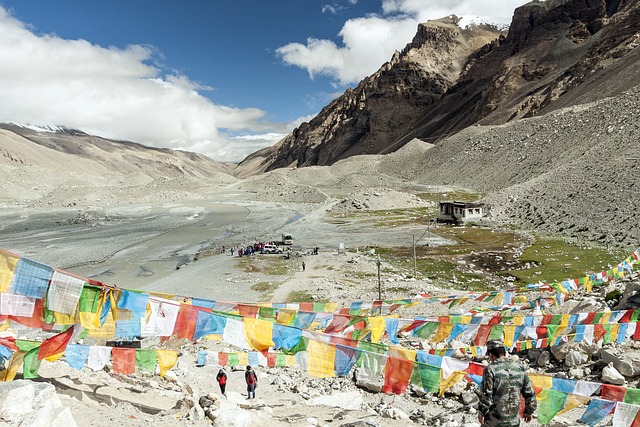
The Tibetan side gets much less foot traffic than the Nepal side. Unlike the Nepal side, Tibetan Base Camp has road access. Climbers and guides that have done both sides also say that the lower camps are easier to reach on the Northeast Ridge route.
There were multiple attempts on the Northeast ridge prior to Everest’s first successful summit. Possibly the best known climb was the 1924 expedition by George Mallory and Andrew Irvine who both perished on the mountain. Since Irvine's body and the expedition camera was never recovered, no one is sure whether these two did in fact reach the summit.
The first official summit from the Tibetan side was by a Chinese team of Nawang Gombu (Tibet), Chu Yin Hau and Wang Fu-Zhou in 1960. In 1975, the Chinese installed a ladder on the second step to the summit.
There are some advantages to climbing Everest from the Tibetan side. A major one is that you avoid having to cross the treacherous Khumbu Icefall. The Tibetan base camp is big enough and far enough from the mountain slopes to be safe from rock falls and avalanches.
The Tibetan side of Everest is also managed more strictly than the Nepal side. China limits climbers to 300 people. There are more officials on the mountain and the waste policy is more strictly enforced. The use of electric vehicles and solar panels means limited fossil fuel pollution at lower camps.
A disadvantage of climbing from this side is it’s generally colder and more windy than the South Col route. Another major consideration is that there is not really an option for helicopter rescue on the Chinese side.
Note: Over the years, the Chinese Government has been inconsistent about granting access and issuing permits to climb Everest from the Tibetan side. The route was closed during 2020 (as was everything during the COVID pandemic) and is yet to re-open.
Tibetan Basecamp (5,182m/ 17,000m) - Interim Base Camp (6,187m/ 20,300ft)
Base camp has road access and is the only point from which vehicle evacuation is possible. Most climbers use the interim camp during acclimatization treks; it lies halfway between Base Camp and Advanced Base Camp (ABC).
Interim Base Camp - Advanced Base Camp ( 6,400m / 21,000ft)
ABC is usually the main acclimatization base for Everest climbers on the Tibetan side. Yaks can still get to this camp. ABC often experiences rough weather conditions and is a long walk back to Base Camp.
ABC - Camp 1 (7, 000m / 23,000m)
On route to the North Col is where the route starts to get technical. Climbers will need to use crampons and a fixed rope to cross the East Rongbuk Glacier. The altitude increase is steady with one particularly steep section up fixed rope.
North Col / Camp 1 - Camp 2 (7, 500 / 24,750ft)
This section is mostly climbing up a snow covered ridge. Strong winds make this a very cold and tough part of the Everest climb. From the North Col, climbers start to use supplementary oxygen.
Camp 2 - Camp 3 ( 8,300m / 27,400ft)
Tents are spread out along the exposed ridge. Camp 3 is the point from which teams make their summit bid. It is higher than South Col on the Nepal side.
Camp 3 - Summit ( 8,850m / 29,035m)
From Camp 3, climbers cross a snowy gulley which is part of the limestone ‘Yellow Band’. After the gulley, the ascent of the North East Ridge begins in earnest. This means getting up 3 rocky outcrops sections known as the First, Second and Third Steps. Mushroom Rock is a feature about 2 hrs from Camp 3 where a stop is usually made to swap oxygen.
All of this section is technical but the Second Step is the most difficult. After 10 feet of vertical rock, climbers reach the 30ft Chinese ladder. The ladder is especially difficult to climb down when you rely on feel to reach the next rung.
Just before the top, you will climb another snowy slope or Summit Pyramid. This exposed section can take up to 4 hours before reaching the final ridge to the summit.
Other Routes
Two of the more climbed alternative routes are the S. Pillar Route and SW Face (including Bonington Route) which have had 45 and 48 summits, respectively.
Just over 2% of summits have been on the lesser-known routes. Disproportionately, almost 27% of the deaths are attributed to these alternative routes.
Only the East Face and the route over the East Ridge (known as Fantasy Ridge) remain unclimbed. These parts of Everest are extremely high-risk for avalanches.
Training For Mount Everest - Physical And Mental Preparation
Don Whillans was a famous climber from the 60’s & 70’s. When he went on expeditions, he often showed up out of shape. He’d say “the mountain will get me fit”. He meant that all the work setting up camps, getting acclimatized and moving up and down the mountain would get him into shape.
Don Whillans was a freak of nature. You are not Don Whillans. Get into shape before even thinking of taking on Everest!
Getting Fit For Your Climb
You need to be aerobically fit. Your training regime should include some sort of cardio, whether it’s running, biking, swimming or cross country skiing. Whatever it is, do it regularly. This will help build endurance and lung capacity as well as strengthen your calves. Exactly what you need to plod slowly up the mountain breathing heavily in the oxygen-depleted air.
Strength training is also vital to climb Everest. It will help you to pack on a few pounds of muscles. When you get to extreme high altitude your metabolism changes, you lose your appetite, you lose weight, starting with muscle. If you can build up some leg, chest, shoulder and arm muscles, you’ll have more of a buffer when your body is under strain.
Also, a few extra pounds of stored fat will help with the change in diet and any GI issues you might have. Climbers have often been known to lose over 30 lbs (15kg) on an expedition.
Skills and Experience
Everest is a technical climb. You need to have mountaineering experience including rope handling and rock climbing. It’s best to start with some other high-altitude peaks in preparation for the highest of them all.
The Nepal government requires that people have climbed at least one 6,500m (21,325ft)+ Nepalese mountain before they will issue a permit for Everest.
Some good practice summits include Denali, Mt Rainier, Aconcagua and Cho Oyu.
Note: The Chinese government does not issue permits to Chinese nationals who have not summited another of the 8000m mountains.
Mental Preparation For Climbing Mount Everest
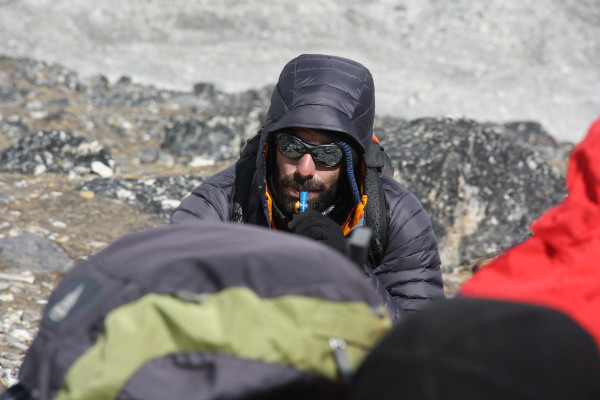
Most people think that climbing Everest is a difficult physical undertaking and that only strong, fit people are successful. While this is partly true, what most people don’t know is that it is also extremely challenging mentally.
The majority of climbers that don’t reach the summit turn around long before summit day. An Everest expedition is a 7 to 9 week ordeal that wears you down. Every day you wake up and have to endure discomfort, pain and cold in varying degrees.
At the same time, you are missing loved ones and the comfort of your routines.
All of this is shadowed by the nagging fear that you might actually die.
Undertaking shorter Himalayan expeditions, even a trek to basecamp, help build mental preparedness. You need to get used to the food, surroundings and logistics of being on an Everest expedition.
Be completely honest with your team leader. As soon as you start to develop fears, it’s best to talk them through. Most good leaders will have seen this many times before and have strategies that can help you cope.
Altitude Sickness and Acclimatization On Mt Everest
One of the biggest risks to Everest Climbers is developing altitude sickness, also known as Acute Mountain Sickness (AMS). It’s vital to know the symptoms of altitude sickness and how to treat them.
One of the most important steps in preparing to Climb Mount Everest is acclimatizing to high altitude. If you have climbed above 5,000 meters of elevation before, you will at least have some idea of how your body reacts. This said, there’s never any guarantee when predicting the effects of high altitudes on a person.
The acclimatization process for Everest involves going up and down between the different base camps to properly adjust.
Do I Need Insurance To Climb Mount Everest?
Yes, insurance cover is mandatory to climb Everest. You will also need to submit a doctors medical report when applying for a permit.

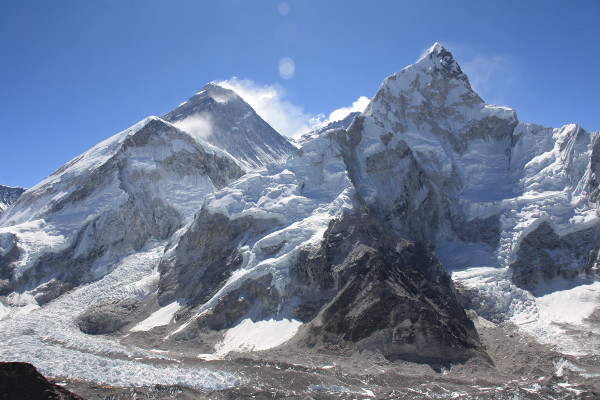
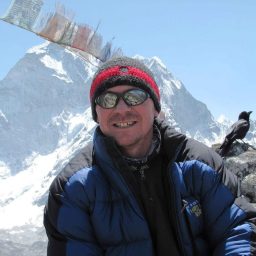
Very good information on Everest Climb
Our climbing expeditions maximize many years of accumulated wisdom leading trips to the highest mountains on the planet, a strong record of reaching the top of 8000ers: Everest, K2, Kangchenjunga, Lhotse, Makalu, Cho-Oyu, Shishapangma and many other high altitude summits in all safety, along with an intimate knowledge of the officials who regulate the permit system. We have conducted countless 8000, 7000 and 6000 metre peak expeditions, and consider ourselves specialists in identifying, organizing expeditions to, and getting teams safely to the summit and back down. We have been running expeditions for over 20 years and we know all of the bureaucratic officials, liaison officers, yak drivers, and hoteliers/restaurateurs personally in the countries we visit. We must also give credit to our polite and highly experienced, hard-working climbing sherpas, high altitude guides, cooking, and office staff.